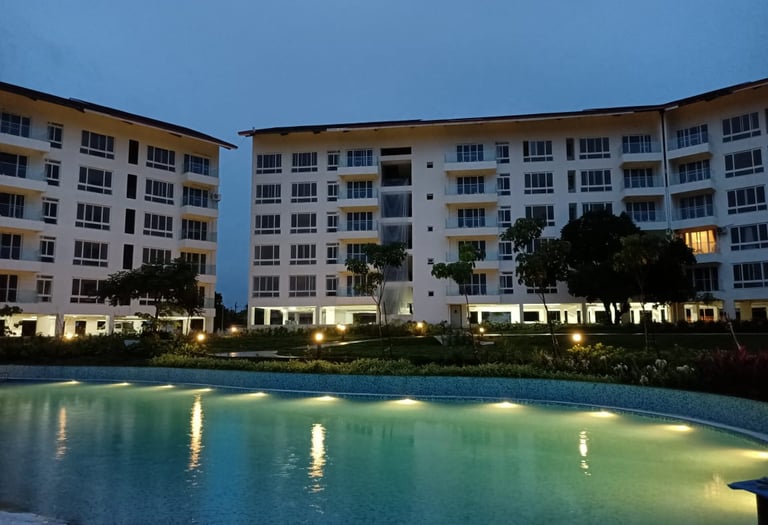Enjoy exclusive discounts on our stylish windows!
Keeping Cool: uPVC Windows for Bangalore’s Hot Summers
6/18/20253 min read


Introduction
Bangalore is famous for its relatively pleasant weather compared to other major cities in India, but lately, the climate has been shifting quite a bit. With urban areas expanding, more concrete being poured, and green spaces dwindling, summer temperatures are on the rise. In neighborhoods like Whitefield, Electronic City, and Yelahanka, indoor temperatures can soar to uncomfortable levels during the summer, making effective cooling solutions essential. That’s where uPVC windows come into play—they're a smart, energy-efficient choice for homeowners who want to keep their interiors cool without relying too heavily on air conditioning. In this blog, we’ll dive into how uPVC windows can help keep Bangalore homes comfortable during those sweltering summer months, what features make them so effective, and how they stack up against traditional window materials.
1. The Urban Heat Island Effect in Bangalore
Bangalore's summers are becoming increasingly sweltering, largely due to the urban heat island effect. This phenomenon occurs when natural landscapes are replaced by concrete, asphalt, and buildings that trap heat. As a result:
- Daytime temperatures frequently soar above 35°C
- Nights stay warm because buildings retain heat
- Residential structures soak up heat and release it slowly, leading to discomfort indoors
To tackle this issue, many homeowners are opting for energy-efficient building materials—and windows are a key part of this approach.
2. The Role of Windows in Indoor Heat Gain
Did you know that up to 30% of unwanted heat in our homes comes in through the windows? Those classic aluminum or wooden frames are quick to conduct heat, allowing the outside temperature to seep indoors. This creates a greenhouse effect, where sunlight and warmth get stuck inside, leaving rooms feeling sweltering.
That’s where uPVC (Unplasticized Polyvinyl Chloride) windows come into the picture.
3. Why uPVC Windows Are Effective for Hot Climates
uPVC windows are specifically engineered to resist heat transfer. Their material properties and design features work together to block out heat and maintain a cooler indoor environment.
Key Features:
Low Thermal Conductivity: uPVC does not conduct heat like metal or wood, making it a natural insulator.
Multi-Chambered Frames: Air pockets within the frame slow down the movement of heat.
Double or Triple Glazing Compatibility: These glass options further reduce solar heat gain.
Tight Seals and Weather Strips: Prevent warm air infiltration from outside.
These features ensure that your home stays cooler even during peak afternoon temperatures.
4. How uPVC Reduces Reliance on Air Conditioning
With uPVC windows installed, homes experience a noticeable drop in indoor temperatures. This reduces the need for air conditioning and results in significant energy savings.
Energy Efficiency Benefits:
Lower electricity bills
Reduced carbon footprint
Less load on cooling systems
Longer lifespan for air conditioning units
Studies show that homeowners can save up to 20–30% on cooling costs just by switching to thermally efficient windows.
5. Ideal Glass Pairings for uPVC Windows
The efficiency of uPVC windows increases manifold when combined with the right glazing:
Double Glazing: Two layers of glass with a vacuum or gas-filled space that insulates against heat and noise.
Low-E (Low Emissivity) Glass: Reflects infrared rays, keeping interiors cooler without blocking natural light.
Solar Control Glass: Tinted or coated glass that limits UV and heat penetration.
In Bangalore’s sunny climate, Low-E glass paired with uPVC is one of the best combinations for thermal comfort.
6. uPVC vs. Other Window Materials in Hot Weather
MaterialHeat InsulationMaintenanceCostDurabilityuPVCExcellentLowModerateHighWoodPoor (expands/cracks)HighHighMediumAluminumPoor (high conductor)MediumLowHigh
As seen above, uPVC wins in most categories when it comes to keeping interiors cool and comfortable.
7. Real-World Results from Bangalore Homes
Case Study: Apartment in Koramangala
The owners replaced single-glazed aluminum windows with uPVC double-glazed units. The outcome:
Indoor temperature dropped by 4–5°C
Reduced AC usage by 40% during summer months
Quieter interiors and improved sleep quality
Resident Testimonial:
“Switching to uPVC windows was the best decision we made. Even during April and May, our home feels comfortable without keeping the AC on all day.” – Anita Rao, Koramangala
8. Additional Comfort Features of uPVC in Summer
Aside from thermal insulation, uPVC windows provide:
UV Protection: Keeps furniture and wall paint from fading
Noise Reduction: Keeps out traffic and construction noise
Dust Sealing: Keeps interiors cleaner in dry, dusty summer conditions
9. Customization for Bangalore Homes
uPVC windows come in a wide range of:
Styles: Casement, sliding, tilt & turn
Colors: White, wood finish, grey, and custom shades
Sizes: Custom-sized for balconies, French windows, or kitchen vents
Architects in Bangalore often prefer uPVC for its blend of aesthetics and functionality in modern home designs.
10. Maintenance Tips During Summer
uPVC windows are extremely low-maintenance, but here are a few summer tips:
Clean glass with a vinegar-water mix to remove grime and dust
Check weather stripping and seals before peak heat
Keep windows closed during the hottest part of the day
Use blinds or UV-blocking films for extra comfort
Conclusion
uPVC windows aren’t just a passing fad in construction—they’re a wise investment that brings comfort, sustainability, and savings over time. With Bangalore’s sweltering summers, these windows offer excellent natural insulation, help cut down on cooling expenses, and create a cleaner, quieter living space.
Whether you’re updating your home, purchasing a new apartment, or building an independent villa, opting for uPVC windows is a savvy, future-ready decision tailored for Bangalore’s climate.
Contact us to Explore the Range of UPVC Windows & Doors
info@astrapia.net
08069409604
© 2025. All rights reserved.
24x7 CUSTOMER CARE NO:
Bengaluru
Belagavi
Nagpur
Bhubneswar
Head-Office
# 38, Nanjappa Layout,Somashettihalli,Bengaluru - 560090
